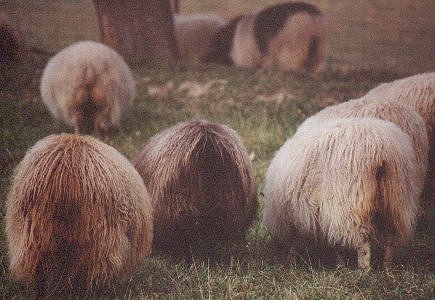Flock Management

Adapted to low cost input management — Icelandic sheep have been raised and fattened on grass alone for hundreds of years in a very short growing season. With rising grain prices worldwide, breeds like the Icelandic Sheep, that thrive on forage alone, will be breeds that will stay economically viable. (Most modern meat breeds require large inputs of grain to reach market weight.) No grain needed for Icelandic sheep on excellent pastures. Sheep on Fescue pasture may need to supplement to get good gains.
Climate range: not yet fully known - they thrive in Iceland's cool, windy, rainy climate, with temperatures ranging from 30 to 52 degrees Fahrenheit. They are also thriving in Canada, the hot and humid Midwest, southern California, and Montana where the temperatures range from -38 to 101 degrees Fahrenheit.
Open fleeces — Icelandic fleaces dry out quickly after a rain, making them a good breed for rainy climates.
Naturally shedding — Traditionally in Iceland, these animals were rooed (plucked) in February or March when they started to shed. Or, the fleeces were cut off in June in a process that was similar to skinning, using a hunting type knife. This knife shearing is still the method used in Iceland on some farms. Our flock is sheared twice a year for best fleece quality.
Naturally short tailed - No docking is needed for Icelandic sheep.
No castration needed — Because lambs on good pasture will reach market weights of 90 to 100 lbs in 5 months, no castration is needed. Lambs reach slaughter weight and are butchered before they go into the rut.
Pasture Lambing — Ease of lambing, good mothering instincts, and excellent milk supply make this breed suitable for low labor pasture lambing.
Fencing needed: 32-inch woven field fencing topped with one or two wires (barbed or electric) will keep the sheep in and the predators out. Four strands of electric fence with the top three strands hot, also works well. Train sheep first with electric netting. Charge with a charger that puts out 5,000 volts minimum.